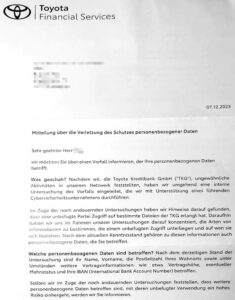Device as a Service (DaaS) has emerged as a key trend in recent years, offering a comprehensive and cost-effective approach to device management. As businesses continue to operate in an increasingly digital world, keeping up with the latest hardware and managing it efficiently can be a daunting task. From small startups to large enterprises, DaaS has proven to be an effective way to keep up with the latest hardware and simplify device management. In this article, we’ll explore why DaaS is becoming more and more essential for organizations and why it should be on your radar.
What is Device as a Service (DaaS)?
Device as a Service is a business model in which organizations outsource the procurement, deployment, management, and support of their end-user devices, such as laptops, desktops, tablets, and smartphones, to a third-party provider. In a DaaS model, the provider retains ownership of the devices and offers them to customers on a subscription basis, similar to a lease. This allows organizations to access the latest technology without having to make large upfront investments while also simplifying device management and support.
Understanding the DaaS business model
One of the biggest boosts for future Device as a Service adoption was the work-from-home movement due to the pandemic. As businesses around the world shut down due to COVID-19, companies that raced to send workers home to do their jobs were often forced into a laptop-buying frenzy. One of the biggest lessons learned was the fact that it is easier to buy the machines fully loaded and preconfigured with software and security to allow workers to securely access work remotely.
For companies, the pandemic basically streamlined the process of quickly enabling a large number of at-home workers that businesses didn’t have in the past. DaaS arrangements also include product support from vendors or partners as needed, including recovering the value through device repair, redeployment, and more.
It’s not just IT organizations that can make use of Device as a Service offerings. Other structures like schools can use DaaS, where school boards can order the same amount of tablets or computers as they have students.

Services begin through a contract with a DaaS vendor that states the software, hardware management, services, amounts, and lengths of time required for use. Payment is typically on a per-device basis. Some OEMs will have a Device as a Service offering and, from their overall device lineup, will offer a somewhat limited number of choices. It’s also important to note that users cannot replace hardware they are using from a DaaS vendor at any time they wish. A contract usually stipulates two to three-year timelines for replacing devices.
Device as a Service service offers typically provide devices that have already gotten the software the organization needs to use installed. A vendor will also include a visible upgrade path for updates and patches.
All in all, the DaaS trend is on the rise and is quick to grow. In fact, in 2014, only one percent of PCs were being shipped as a part of a Device as a Service. Based on market research from the firm IDC, DaaS is set to grow to twelve to fifteen percent of all desktop and laptop offerings by the end of this year. While the percentage might not seem that high, it encompasses all PC offerings and not just enterprise. As a new market, the structures and prices of Device as a Service clearly are continually evolving.
DaaS vs equipment leasing
While Device as a Service and equipment leasing share some similarities, there are important differences between the two models.
| Criteria | Device as a Service (DaaS) | Equipment Leasing |
| Ownership | Third-party provider retains ownership of devices | Customer retains ownership of equipment |
| Payment | Subscription-based model with predictable monthly payments | Fixed payments for a set lease term |
| Maintenance and Support | Included in the subscription cost, with the provider responsible for device management and support | Maintenance and support usually not included and must be managed by the customer |
| Technology Refresh | Built-in, with devices updated and replaced regularly as part of the subscription | Equipment upgrades or replacements must be negotiated separately |
| Scalability | Easily scalable, with the ability to add or remove devices as needed | Limited scalability, with a set number of devices leased for a set period |
| Total Cost of Ownership | Generally lower, with fewer hidden costs and reduced management overhead | Can be higher due to additional costs for maintenance, support, and upgrades |
DaaS offers a more flexible and predictable approach to device management and support, with fewer hidden costs and the ability to access the latest technology without making large upfront investments. Leasing equipment may be a better option for organizations that want to retain ownership of their devices and have more control over maintenance and upgrades. Ultimately, the choice between the two models will depend on an organization’s specific needs and priorities.
Benefits of Device as a Service
In today’s data-driven era, hardware is just as critical as software when it comes to achieving business success. However, keeping up with the latest hardware devices and managing them can be a costly and time-consuming task. This is where Device as a Service comes in, offering a range of benefits to organizations that require flexible and scalable device management solutions. In this article, we’ll explore the top benefits of DaaS and how it can help organizations stay ahead of the curve in the fast-paced world of technology.
Reduced upfront costs
With a DaaS model, organizations don’t have to make large upfront investments in hardware, software, and infrastructure. Instead, they pay a predictable monthly fee to access the latest devices and technologies without having to worry about depreciation or the costs associated with owning and managing devices.
Achieving data resilience with StaaS
Improved device management
Device as a Service providers take care of the procurement, deployment, and ongoing management of devices, which frees up IT staff to focus on more strategic initiatives. This includes device configuration, software updates, security patches, and troubleshooting. DaaS providers also handle device end-of-life management, ensuring that devices are securely wiped and responsibly recycled or disposed of.
Predictable budgeting
The subscription-based model of DaaS provides organizations with a predictable monthly fee that includes all hardware, software, and support costs. This makes it easier to budget and plan for device-related expenses without having to worry about unexpected costs or budget overruns.

Access to latest technology
With Device as a Service, organizations can keep up with the latest devices and technologies without having to make additional investments. DaaS providers refresh devices on a regular basis, ensuring that organizations always have access to the latest and greatest hardware and software.
Scalability
DaaS offers organizations the ability to easily scale up or down as their device needs change. This includes the ability to add or remove devices, change device configurations, and adjust subscription levels to meet changing demands. This allows organizations to be more agile and responsive to changing business needs.
Enhanced security
DaaS providers offer a range of security features and tools to help organizations protect their devices, data, and networks. This includes device encryption, secure boot, antivirus software, and remote device wipe capabilities. Additionally, Device as a Service providers ensure that all devices are updated with the latest security patches and software updates to help prevent vulnerabilities and breaches.
How to choose the best DaaS for your organization?
Choosing the best Device as a Service provider for your organization can be a complex decision that requires careful consideration of several factors. Here are some key steps to follow when selecting a DaaS provider:
Step 1: Identify your business needs
The first step in choosing a DaaS provider is to identify your organization’s specific device-related needs. This includes the number and types of devices required, the required device specifications, and any necessary software and security features. Understanding your business needs will help you evaluate potential providers based on how well they meet your requirements.
Streamlining operations with IPaaS: A comprehensive guide to Integration Platform as a Service
Step 2: Evaluate provider capabilities
Once you’ve identified your business needs, evaluate potential DaaS providers based on their capabilities. This includes the provider’s device portfolio, the availability of necessary software and security features, their device management and support capabilities, and their service level agreements (SLAs). You should also consider the provider’s experience and reputation, including customer references and industry reviews.
Step 3: Review pricing and contract terms
DaaS providers typically offer a range of pricing and contract terms, so it’s important to review these carefully. This includes the monthly subscription fee, any upfront costs or fees, and any penalties or fees for early termination. You should also consider the provider’s billing and invoicing processes and whether they offer any volume discounts or other incentives.

Step 4: Consider service and support
When evaluating Device as a Service providers, it’s important to consider the level and quality of service and support they offer. This includes their availability and response times for device issues, the quality of their technical support, and the ease of accessing support resources. You should also consider the provider’s device deployment and end-of-life management processes to ensure that they align with your organization’s requirements.
Step 5: Assess security and compliance
Security and compliance are critical considerations when evaluating DaaS providers. You should review the provider’s security and compliance policies and procedures to ensure they meet your organization’s requirements. This includes their data encryption and protection measures, their vulnerability and patch management processes, and their compliance with relevant regulatory requirements.
By following these steps, you can select a Device as a Service provider that meets your organization’s specific device-related needs while also providing the necessary security, service, and support to help you achieve your business objectives.
Hardware as a Service provides a full package to organizations with the newest equipment
Device as a Service examples: Best providers
Sure, here are some examples of top Device as a Service providers, along with brief explanations:
- HP Device as a Service: HP Device as a Service offers a wide range of hardware options and flexible contract terms that can be customized to meet a variety of business needs. HP also offers a range of management and security features, including device management, antivirus software, and secure data erasure.
- Microsoft Surface as a Service: Microsoft Surface as a Service offers a range of Surface devices, including laptops and tablets, along with a range of software and management tools. Microsoft also offers a range of support and service options, including device deployment and management, support for third-party applications, and device replacement options.
- Dell Technologies Unified Workspace: Dell Technologies Unified Workspace provides a comprehensive device management solution that includes hardware, software, and services. This includes end-to-end device management, security and compliance features, and support and repair services. Dell also offers a range of device customization options and flexible contract terms.
- Lenovo Device as a Service: Lenovo Device as a Service provides a flexible and scalable device management solution that includes a range of hardware options, software and security features, and management and support services. Lenovo also offers a range of service-level options and customizable contract terms.
- Apple: Apple offers a range of hardware options, including laptops, tablets, and smartphones, along with a range of software and security features. Apple also offers a range of deployment and support options, including device configuration, device management, and repair and replacement services.
These providers offer a range of customizable device management solutions that can be tailored to meet the specific needs of different organizations. By selecting a DaaS provider that aligns with your business needs, you can access the latest hardware and software while also benefiting from a range of management and support services that can help you achieve your business objectives.

Final words
Device as a Service is a critical trend that has revolutionized the way organizations approach device management. The benefits of DaaS, including cost savings, improved security, and simplified management, make it an ideal choice for organizations of all sizes. As technology continues to evolve at an unprecedented pace, DaaS is becoming more and more essential for businesses to stay ahead of the curve. By partnering with a reputable Device as a Service provider, organizations can leverage the latest hardware and enjoy peace of mind knowing that their device management needs are being met. So if you haven’t already, now is the time to consider DaaS as a strategic investment for your business.
- SEO Powered Content & PR Distribution. Get Amplified Today.
- Platoblockchain. Web3 Metaverse Intelligence. Knowledge Amplified. Access Here.
- Source: https://dataconomy.com/2023/02/device-as-a-service-daas-providers/
- 1
- 2014
- 7
- a
- ability
- About
- access
- accessing
- Achieve
- achieving
- Additional
- Additionally
- Adoption
- agile
- agreements
- ahead
- Aligns
- All
- allows
- already
- always
- amount
- amounts
- and
- and infrastructure
- antivirus
- Antivirus Software
- Apple
- applications
- approach
- around
- article
- associated
- availability
- based
- Basically
- basis
- becoming
- being
- benefits
- BEST
- Better
- between
- Biggest
- billing
- breaches
- budget
- business
- business model
- businesses
- buy
- cannot
- capabilities
- care
- careful
- carefully
- change
- changing
- choice
- choices
- Choose
- choosing
- clearly
- Companies
- complex
- compliance
- comprehensive
- computers
- Configuration
- Consider
- consideration
- considerations
- continually
- continue
- continues
- contract
- control
- Cost
- cost savings
- cost-effective
- Costs
- COVID-19
- critical
- curve
- customer
- Customers
- customizable
- customization
- customized
- data
- data-driven
- decision
- Dell
- demands
- deployment
- desktop
- device
- Devices
- differences
- different
- digital
- digital world
- discounts
- Dont
- down
- Early
- easier
- easily
- Effective
- efficiently
- emerged
- enabling
- encompasses
- encryption
- end-to-end
- enjoy
- ensure
- ensuring
- Enterprise
- enterprises
- equipment
- Era
- essential
- Ether (ETH)
- evaluate
- evaluating
- evolve
- evolving
- examples
- expenses
- experience
- explore
- factors
- fast-paced
- Features
- fee
- Fees
- Firm
- First
- flexible
- Focus
- follow
- following
- frenzy
- from
- full
- fully
- future
- greatest
- Grow
- guide
- handle
- Hardware
- hardware devices
- having
- help
- here
- Hidden
- High
- higher
- Home
- How
- However
- HP
- HTML
- HTTPS
- IDC
- ideal
- identified
- identify
- important
- improved
- in
- Incentives
- include
- included
- includes
- Including
- increasingly
- industry
- Infrastructure
- initiatives
- instead
- integration
- investment
- Investments
- invoicing
- issues
- IT
- Jobs
- Keep
- keeping
- Key
- Knowing
- laptop
- laptops
- large
- latest
- learned
- leasing
- Lenovo
- Lessons
- Lessons Learned
- Level
- levels
- Leverage
- Limited
- lineup
- Machines
- maintenance
- make
- MAKES
- Making
- managed
- management
- Management Solution
- Management Tools
- managing
- Market
- market research
- max-width
- measures
- Meet
- Meets
- Microsoft
- might
- mind
- model
- models
- monthly
- monthly fee
- monthly subscription
- more
- movement
- necessary
- needed
- needs
- networks
- New
- New Market
- Newest
- number
- objectives
- offer
- offering
- Offerings
- Offers
- ONE
- ongoing
- operate
- Operations
- Option
- Options
- order
- organization
- organizations
- Other
- outsource
- overall
- ownership
- Pace
- package
- pandemic
- part
- partnering
- partners
- past
- Patch
- Patches
- path
- Pay
- payment
- payments
- PC
- PCs
- percent
- percentage
- plan
- platform
- plato
- Plato Data Intelligence
- PlatoData
- policies
- portfolio
- potential
- Predictable
- prevent
- Prices
- pricing
- procedures
- process
- processes
- Product
- protect
- protection
- proven
- provide
- provider
- providers
- provides
- providing
- quality
- Quick
- quickly
- radar
- range
- recent
- recovering
- Reduced
- references
- regular
- regularly
- regulatory
- relevant
- remote
- remove
- repair
- replace
- replaced
- reputable
- reputation
- require
- required
- Requirements
- requires
- research
- resilience
- Resources
- response
- responsible
- responsive
- review
- Reviews
- revolutionized
- Rise
- same
- Savings
- Scalability
- scalable
- Scale
- School
- Schools
- secure
- securely
- security
- selecting
- service
- Service Provider
- service providers
- Services
- set
- several
- Share
- shipped
- should
- Shut down
- similar
- similarities
- simplified
- simplify
- simplifying
- sizes
- small
- smartphones
- So
- Software
- solution
- Solutions
- some
- somewhat
- specific
- specifications
- Staff
- Startups
- States
- stay
- Step
- Steps
- Strategic
- STRATEGIC INVESTMENT
- streamlined
- Students
- subscription
- success
- such
- support
- Surface
- tailored
- Take
- Task
- Technical
- technical support
- Technologies
- Technology
- terms
- The
- the world
- their
- third-party
- this year
- Through
- time
- time-consuming
- times
- to
- today’s
- tools
- top
- Trend
- types
- typically
- ultimate
- Ultimately
- understanding
- Unexpected
- unified
- unprecedented
- updated
- Updates
- upgrade
- upgrades
- use
- users
- usually
- value
- variety
- vendor
- vendors
- visible
- volume
- Vulnerabilities
- vulnerability
- What
- What is
- whether
- which
- while
- wide
- Wide range
- will
- without
- Work
- workers
- world
- year
- years
- Your
- zephyrnet












